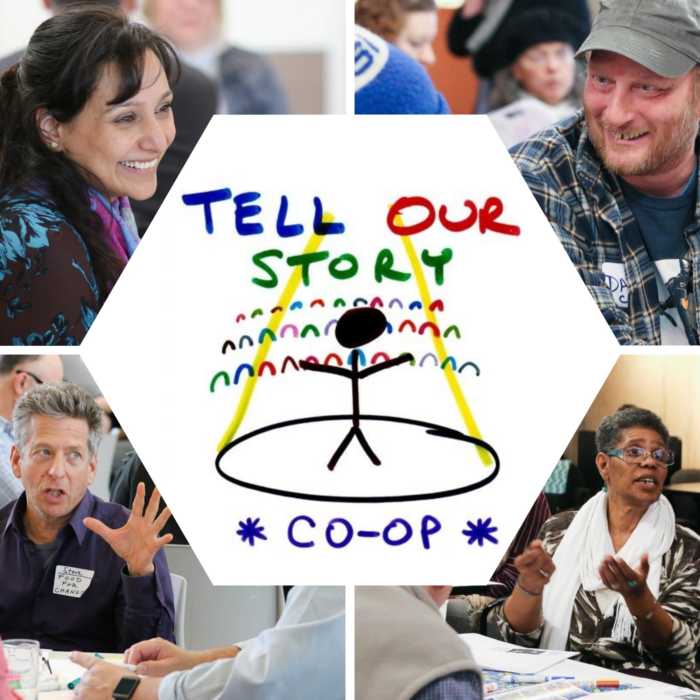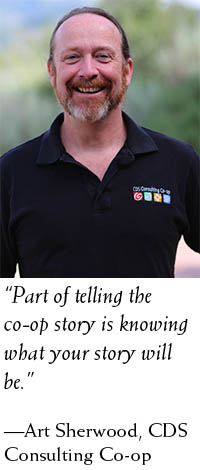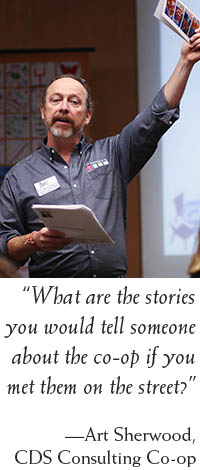
The author Stephen Covey made “begin with the end in mind” a famous touchstone with his book The 7 Habits of Highly Effective People. Beginning with the end in mind is “Habit #2.” Of all the habits he writes about, this one involves the most reflection, pushing the reader to consider whether what they are doing is by design or default. Habit #2 encourages the reader to ask crucial questions, including what you want to be and do, and what kind of difference do you want to make.
The only way to begin with the end in mind is to go through a process of understanding what you want. Then, once you are clear about your desired outcome, you can begin moving with intention in that direction.
Many co-op boards have gone through a similar thought process, and their Ends, or mission, reflects what they seek to accomplish. Successful boards and managers have learned is that clearly articulated Ends provide a foundation on which the organization makes further decisions about co-op activities and communication. The Ends can help everyone in the organization focus on achievement of long term goals and community impact.
Threading the Ends throughout co-op communication and activities is a part of telling the co-op story with intention. Just as articulating Ends is about beginning with the end in mind, successfully communicating with others requires starting with understanding exactly what it is you want to say and do. It’s important to ask: what is the co-op doing by design or default?
 “Part of telling the co-op story is knowing what your story will be,” said Art Sherwood, board and management leadership development consultant. From Sherwood’s perspective, co-op leaders can tell their own stories about their experience with the co-op that is connected to the Ends.
“Part of telling the co-op story is knowing what your story will be,” said Art Sherwood, board and management leadership development consultant. From Sherwood’s perspective, co-op leaders can tell their own stories about their experience with the co-op that is connected to the Ends.
“What are the stories you would tell someone about the co-op if you met them on the street? And what one or two things would you like to get across that are connected to the co-op’s Ends?” For example, one co-op leader might tell their story about being the parent of a child with special dietary needs, and about how the co-op provides a great built-in support system for meeting this challenge. Another co-op leader might tell the story of how they like to shop at the co-op because the co-op contributes to the well-being of other families in the community by donating healthy snacks to a neighborhood after-school program.
Sherwood believes that using Ends to help tell the story is a powerful way to connect people with the co-op. “Being able to do that readily bring the Ends alive and creates a bridge between a value set and activities people are doing.” He said communicating the “why” is a very important aspect of telling a story that connects someone to the co-op beyond a simple mercantile exchange. Using words like “we believe” or “I believe” or “why I/we do this” is a core part of communicating purpose.
And given human nature, it’s also often a stronger approach to talk about why something is important to you first, over leading with its technical virtues. A co-op leader can tell a story about how participating in the co-op helps them make some part of their world (like their child’s health, or the well-being of other families in the community) better. And that story can help others know that their own choices can also contribute to something good.
Yet, as Sherwood acknowledged, most people are not born knowing how to tell stories with intention. It’s a skill that needs to be cultivated, for both individual one-on-one interactions as well as for groups of people in a leadership role. Training, planning and facilitation can help co-op leaders reach their storytelling potential.

As the leader of numerous board retreats, Sherwood spends time helping people get at their “why” and being more comfortable with purposeful storytelling. “We start with a series of activities where we sit down as partners and talk with people one-on-one about why they are involved in the co-op. And then we switch partners. What these activities do is create bridges between ourselves in the co-op and a larger set of values.” He encourages people to come up with three things they have prepared that they want to say about the co-op.
Why do this work? To create organizational alignment. “You don’t want that bridge to get broken, where people don’t see the connection between the co-op’s values and actions.” Sherwood said that the inability to tell the co-op story effectively risk promoting cognitive dissonance, or a state of inconsistency, that could reduce trust in the co-op. “When you tell these stories well it can help connect, for example, why having an expansion is a new and additional way to manifest the values that everyone cares about.”
He also stressed that part of the leadership skill in storytelling is the ability to move understand nuance and abstractions. “As a board member, general manager, staff or marketer in the process of explaining and connecting the co-op to people, it helps if you understand the various needs of your core, mid-level and peripheral customers.” Different people may be open to hearing different stories. “Can you move fluidly from one story to another?”
“And practice. Absolutely. There’s a deep tradition in storytelling and a higher purpose to it.”
Have more questions?
Get in touch with one of our consultants.
